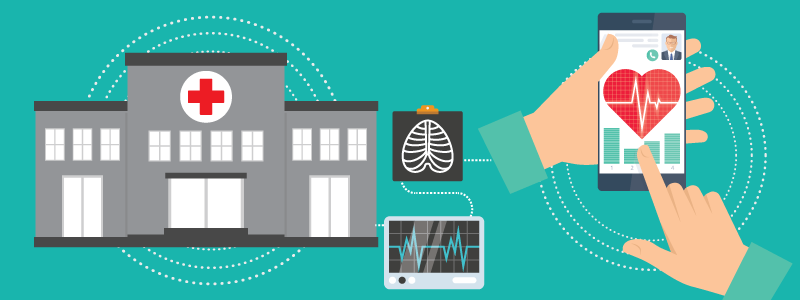Hi! We haven’t formally met, but I’m Ashley Durkin-Rixey, director of communications at ACT | The App Association. I joined the App Association in August of 2018.
This is a personal story about digital health tools that begins with roller derby.
I played competitive roller derby for about eight years with two teams in the DC area, from 2006 until 2015. If you need a primer on roller derby, check out this one courtesy of the Women’s Flat Track Derby League. As you can imagine, it is an intense sport filled with body checks, jukes, and a lot of speed skating. It took a toll on my body in many ways, namely my right hip, thanks to skating in one direction.
For three years after I “retired,” I experienced moderate to severe pain in my right hip, along with a clicking noise and pulling sensation any time I externally rotated my hip. I ran the full course of treatment from physical therapy to dry needling, cortisone injections, and medications but with only temporary relief.
Getting the Diagnosis and a Path Forward
After countless unsuccessful treatments, I finally found an orthopedic surgeon who intimately understood the pressures this style of sport placed on my hip, thanks to his background in treating snowboarders, skiers, and speed skaters. He diagnosed me with a hip impingement and full labrum tear caused by the trauma and repetitive motions of roller derby. The solution? Hip preservation surgery to finally treat the underlying cause of my pain. My surgery is scheduled for April 15—death, taxes, and a functional hip.
I’m only 38, so having a hip saving procedure at this point in my life is a little scary. What gave me some comfort was seeing a poster in my doctor’s office for his pre- and post-surgery app. Thanks to our Connected Health Initiative (CHI), I’m fully immersed in the benefits digital health tools can provide for patients like me.
There’s an App for My Recovery
Technology is a big part of my work and home life, so why not harness it for my recovery? Over the next few weeks I’ll be keeping a diary of how I’m using digital tools in concert with my care provider for an easier recovery. First up, is my pre-surgery prep. Right now, I’m keeping track of my pre-surgery pain levels using Ouchie in order to establish a baseline for each stage of my recovery. Recovering from surgery requires a lot of reminders—to take medications, move, ice, and eat. Here’s what I am going to need to juggle:
- Six to eight prescription and over the counter medications with varying instructions on when to take them
- Icing the surgical site continuously for the first 48 hours, and intermittently after those first days.
- Six hours a day of using a continuous passive motion machine
- Home physical therapy exercises to increase mobility and avoid complications such as deep vein thrombosis
- Ten deep breaths an hour to keep my lungs in tip top shape
- Staying hydrated and fed
That’s a lot to remember in addition to post surgery appointments and check ins.
Let’s look at medication alone. Numerous studies show that adhering to a post-surgical medication schedule is extremely important to pain management and patient outcomes. But many people struggle to remember and follow discharge instructions from providers. And what happens when they don’t have a consistent caregiver at home to manage those reminders? Digital health tools like an AI assistant or a medication tracking app can help patients stay on course, and in some cases provide data to their provider on medication usage. Really beats an egg timer, doesn’t it?
My husband will help me with much of this, but what about when he is teleworking or decides he needs some rest? Enter my Google Home, also known as Nurse Google. Using my artificial intelligence driven home assistant, I can set up individually named timers and reminders for all of these activities that will broadcast to all the networked devices in my home. It seems so silly, but the ability to automate these reminders and instructions will make a critical difference in adhering to my doctor’s orders.
Pain management is another area where consumer apps can provide a big assist to surgical recovery. A 2016 study by Wake Forest University, published in the Journal of Neurosurgery, found that “mindfulness meditation achieves its pain relief effect without engaging the opioid receptors in the brain.” Many of the meditation apps available today have specialized meditations for chronic pain and injury. As prep for my surgical recovery, I started a 30-day program through Headspace on mindfulness for pain management. I’m two weeks in and already see a difference in determining where my pain actually is, in the joint or just routine muscle aches.
Surgical recovery isn’t easy, and in a case like mine, it is an active process with milestones measuring success. I’ve spent the last three years seeking a medical solution to address my pain and now that I finally have one, I’m determined to do all I can to ensure a successful recovery. The fact that technology can make this an even better process is music to this nerd’s ears. Stay tuned for an update from my recovery process and my experience using my surgeon’s app to keep on top of at home physical therapy.
